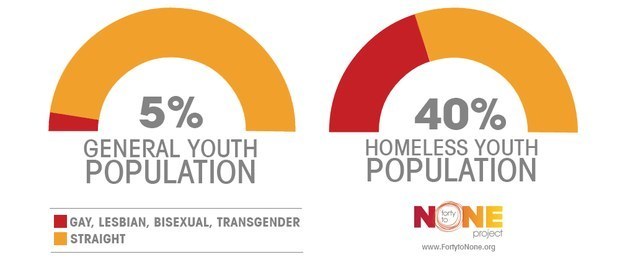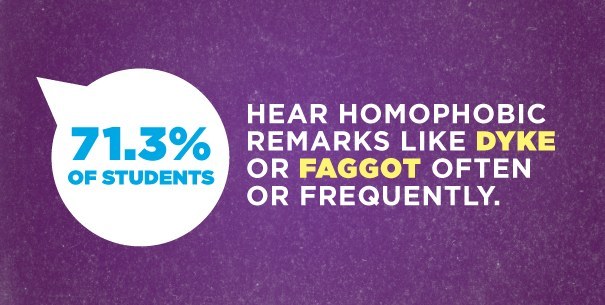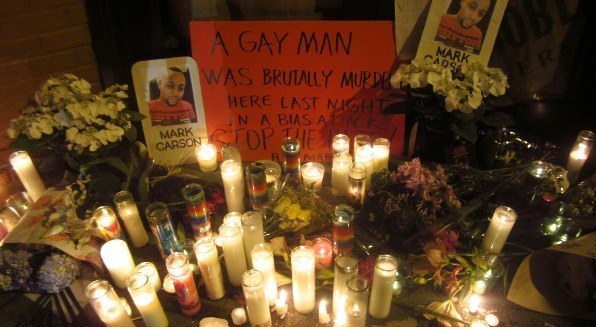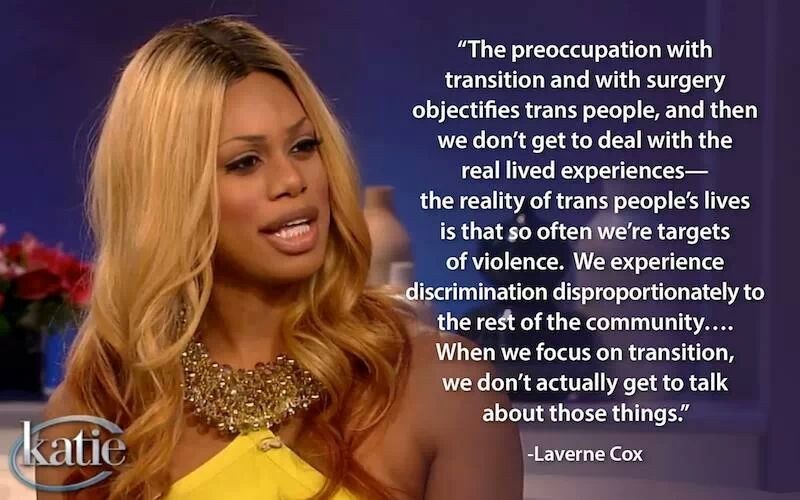The LGBT rights movement in recent decades has focused on a particular kind of equality: the right to marry.

As a result, gay and lesbian Americans have seen remarkable progress in the overturning of laws and constitutional amendments prohibiting same-sex couples from marrying. Judges have struck down same-sex marriage bans in 11 states this year alone.
But as marriage equality becomes more widespread and continues to dominate LGBT news coverage, a number of other LGBT issues, some of them concerning matters of life-and-death, demand attention. Here are six.
1. Thousands of LGBT Youth Are Living On The Streets

LGBT youth are at serious risk of homelessness. In fact, they account for approximately 30 percent of people served by housing programs in the United States, according to a July 2012 report. More startlingly, of those served by long-term housing programs, approximately 40 percent identify as LGBT.

LGBT youth are particularly vulnerable because of their age and family dependence. According to the report, nearly 70 percent of clients served by homeless youth organizations have experienced rejection—and more than half have reported being abused—by their families.
Homelessness also contributes to incredibly high rates of suicide for LGBT persons. According to the American Foundation for Suicide Prevention and the Williams Institute, 69 percent of transgender and gender non-conforming adults who have experienced homelessness have attempted suicide. [Equally alarming numbers exist for multiracial transgender and gender non-conforming adults (54 percent), as well as for those who have suffered family exclusion (57 percent).]
While the number of homeless organizations serving LGBT youth has increased over the last decade, some organizations still turn away the homeless because of their sexual orientation and gender identity. To put it differently, some teens, having been rejected once by their family, are rejected yet again by anti-LGBT homeless organizations.
2. Anti-LGBT Bullying Leads To Drug Abuse — And Even Suicide

Despite increasing acceptance of LGBT persons, schools and communities remain dangerous places for many teens, with bullies targeting those perceived to be lesbian, gay, bisexual, or transgender. The effects of anti-LGBT bullying are real and frightening.
Youth bullied because of their actual or perceived sexual orientation are at an increased risk of engaging in a host of risky behaviors. Nearly 40 percent of LGB teens report smoking cigarettes, compared to 14 percent of heterosexual teens, according to the Center for American Progress. Additionally, a quarter of LGB teens, but only 10 percent of heterosexual teens, report having driven after drinking. Even more seriously, LGB youth have twice the risk of risk of suicide and depression as compared to their heterosexual peers.
However, some schools are taking action to protect LGBT students. A 2005 survey by Harris Interactive showed that students whose schools have policies clearly prohibiting bullying on the basis of sexual orientation and gender identity attend class more often, feel safer, and experience fewer serious harassment problems.
3. The Number Of Hate Crimes Against LGBT People Remains Alarmingly High

Nationally in 2012, 1,318 Americans were victims of hate crimes because of their sexual orientation. Of those, more than half were victims of the offender's anti-male homosexual bias. In 2011, there were 1,508 reported hate crimes committed against LGBT people. The FBI has not released numbers for 2013.
Just last month, a New Jersey man was arrested and charged with murdering two young gay men in Seattle in June. According to court documents, the suspect allegedly planned the attack, and after meeting the victims on a gay dating app, shot them execution-style, leaving their bodies in the street.
Disturbingly, the FBI does not report numbers regarding hate crimes against transgender persons.
4. Some States Do Not Have Hate-Crime Laws At All

With the frightening numbers above in mind, one might imagine most states to have laws addressing anti-LGBT hate crimes. But five states—Arkansas, Georgia, Indiana, South Carolina and Wyoming—have no hate-crime laws on the books at all, and another 14 states have hate-crime laws that do not include crimes committed on the basis of anti-LGBT bias. Put another way, only 15 states have laws addressing hate crimes committed on the basis of sexual orientation and gender identity.
5. LGBT Persons Lack Access to Health Care & Insurance

Having historically suffered from a lack of access to health care and insurance, LGBT persons may stand to gain most from the newly implemented Affordable Care Act. According to a 2009, i.e. pre-Obamacare, study, LGB adults are less likely—and transgender adults significantly less so—than their heterosexual counterparts to have health insurance coverage. LGB adults are also almost twice as likely as heterosexual adults to delay or not seek medical care.
In addition, while 83 percent of heterosexual adults report having excellent or very good overall health, only 77 percent of LGB adults and 67 percent of transgender adults report the same.
According to the Center for American Progress, sources of such health inequalities include "reduced access to employer-provided health insurance, the social stigma that exists against LGBT people, and a lack of cultural competence in the health care system."
6. Discrimination Against Transgender Americans Is A National Crisis

While the entire LGBT community faces various forms of discrimination, it does not experience discrimination equally. The fact is that transgender and gender non-conforming adults face more serious forms of discrimination in higher numbers than almost any other group of Americans.
In a groundbreaking report of the National Transgender Discrimination Survey titled "Injustice at Every Turn," the kinds and level of discrimination described are as saddening as they are appalling. The transgender and gender non-conforming survey respondents were almost four times as likely as the general population to have had a household income of less than $10,000, leading many to work in the underground economy, some in the sex or drug trades, to earn money. In addition, nearly half of the respondents reported having been fired, not hired, or denied a promotion because of their status. As a result, respondents who were unemployed experienced "twice the homelessness, 70 percent more incarceration, and…nearly double the HIV infection rate…compared to those who were employed."
On top of increased rates of HIV infection, drug and alcohol misuse (as coping mechanisms), and physical assault, a shocking 20 percent of respondents reported having been denied medical care because of their status as transgender and gender non-conforming individuals.

